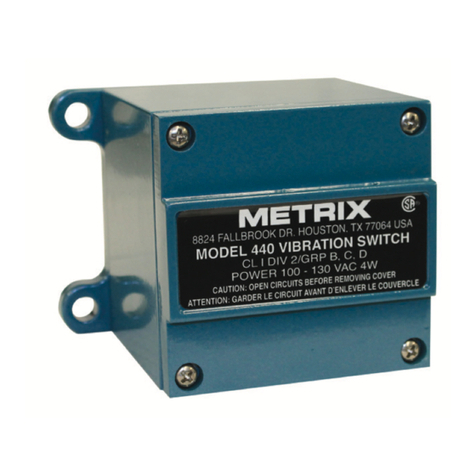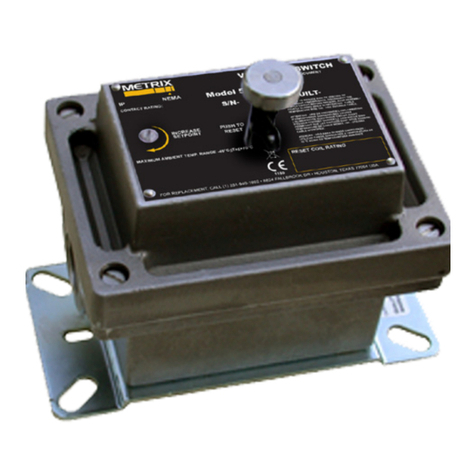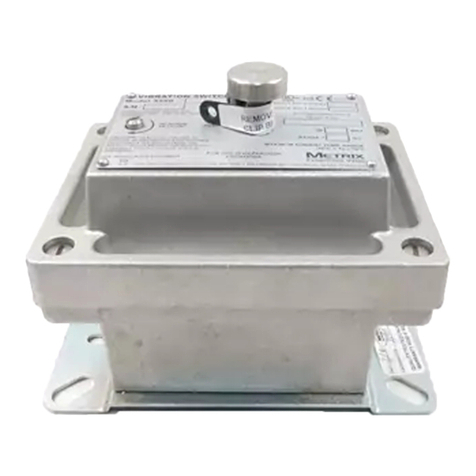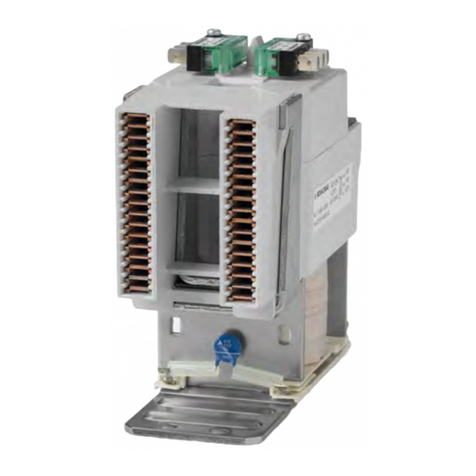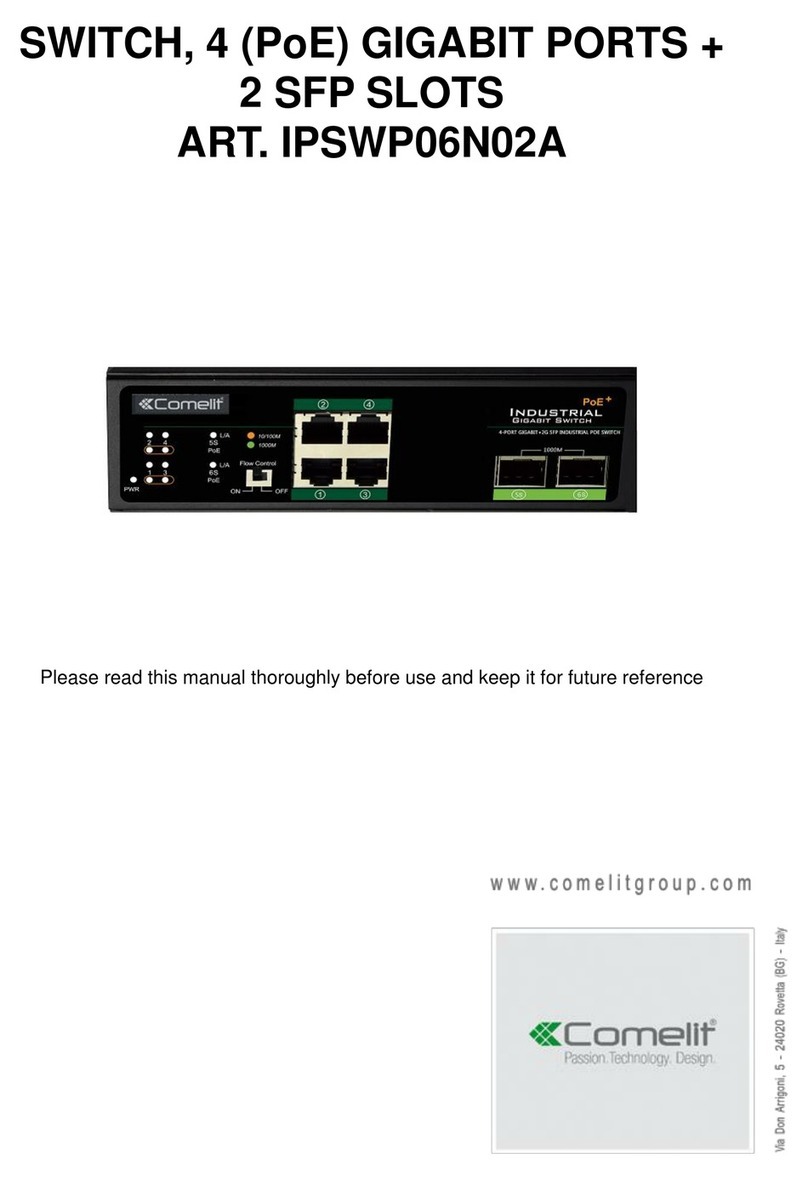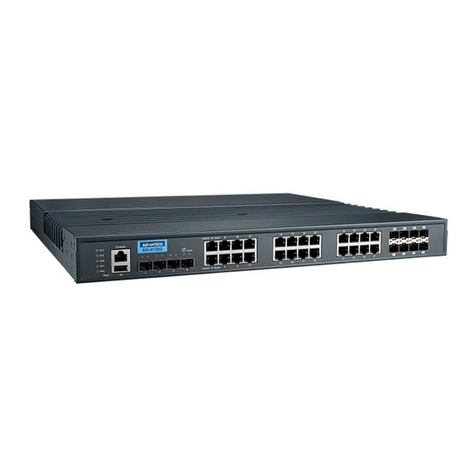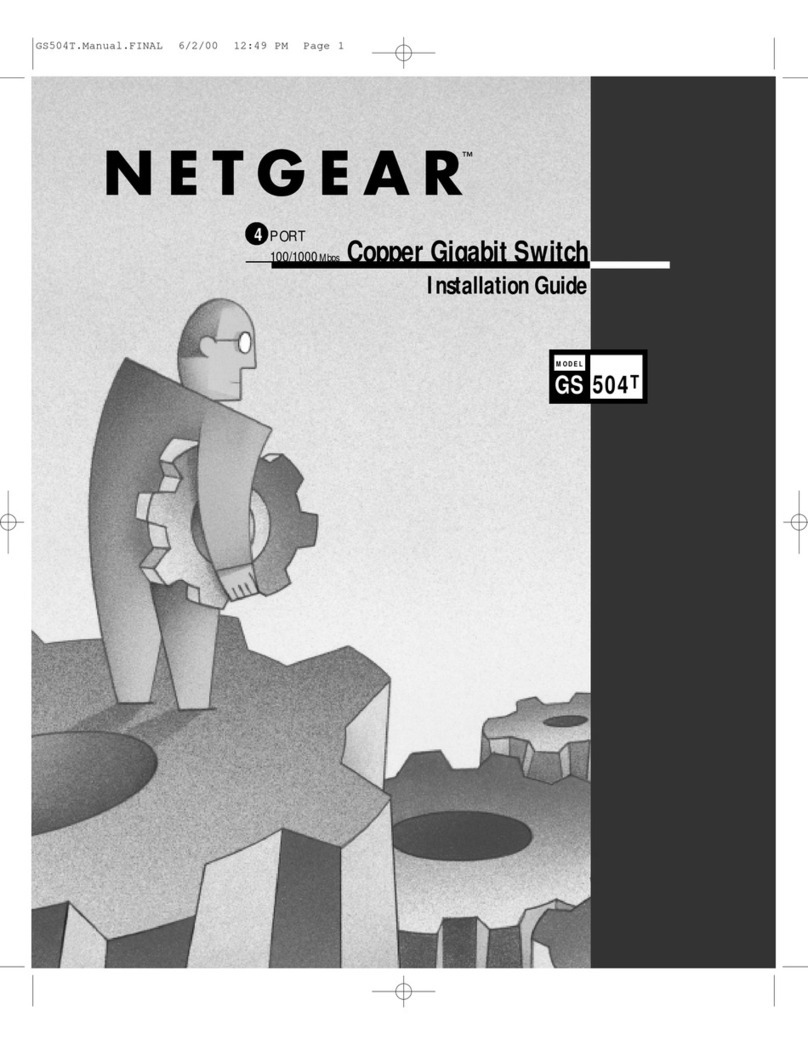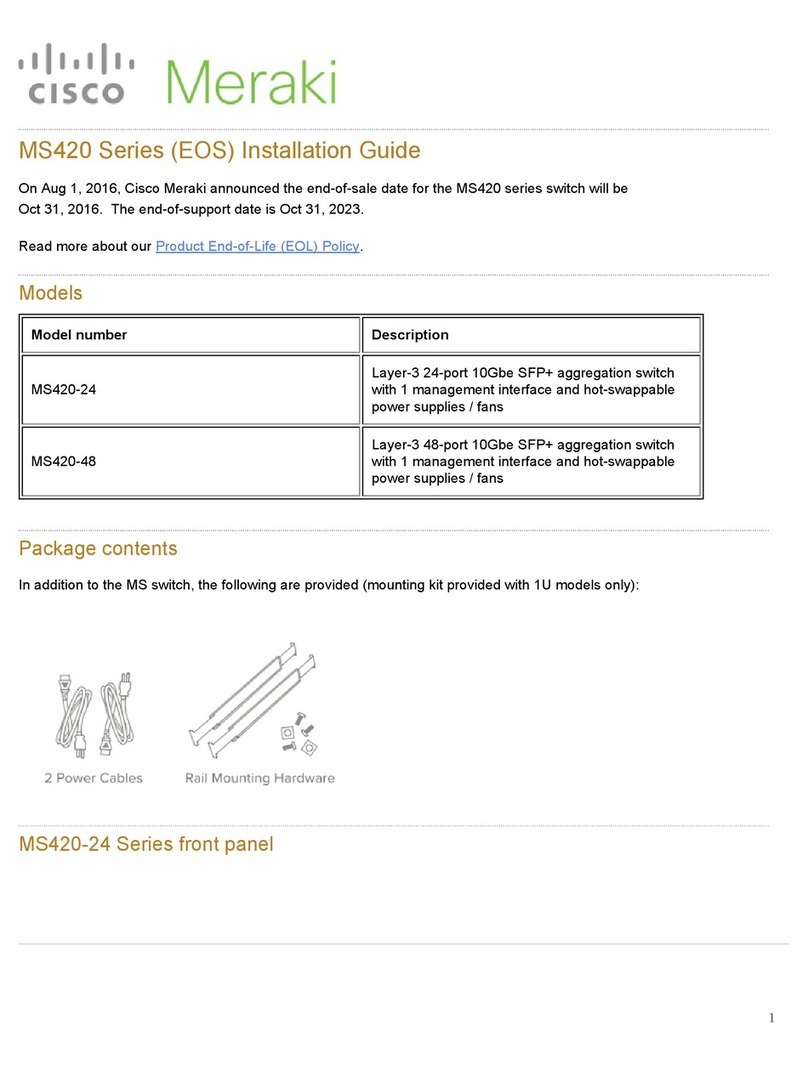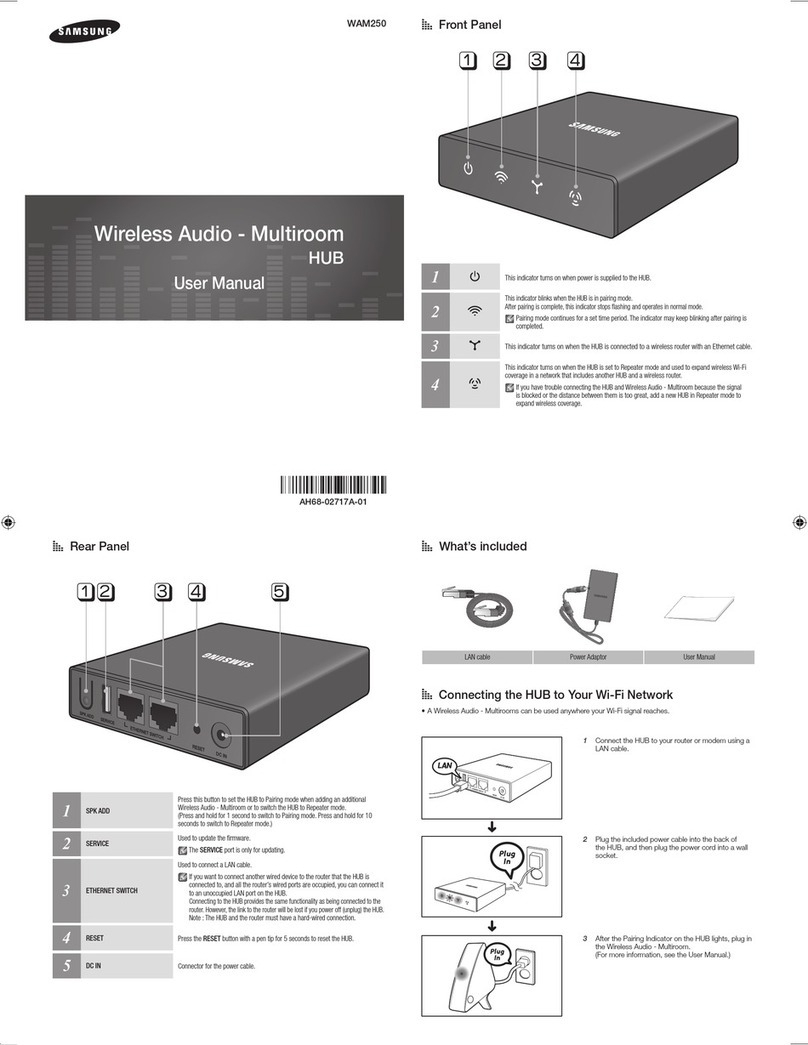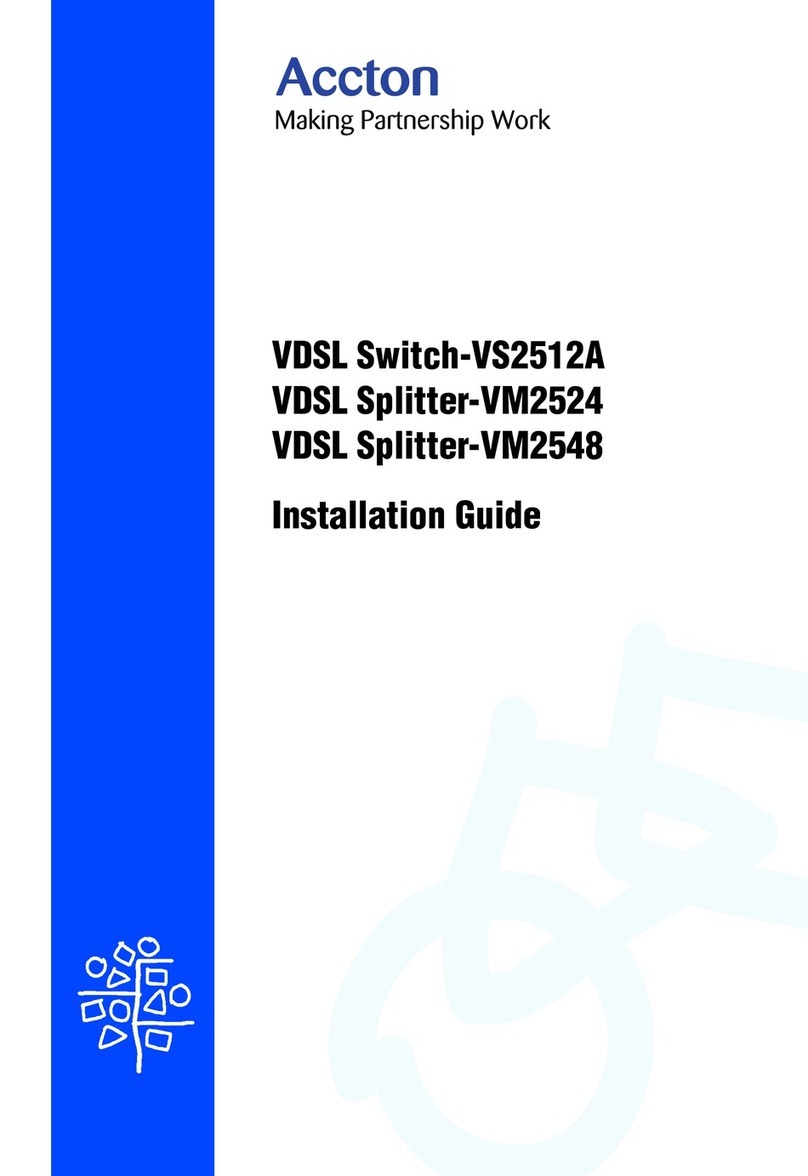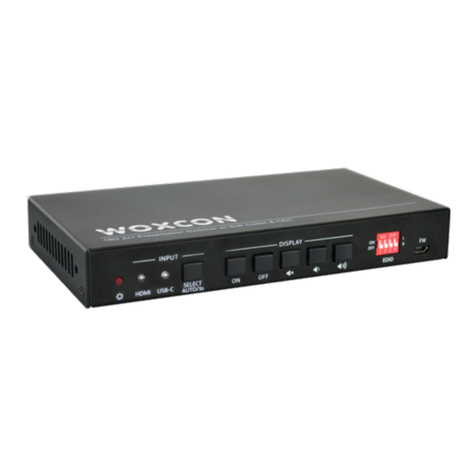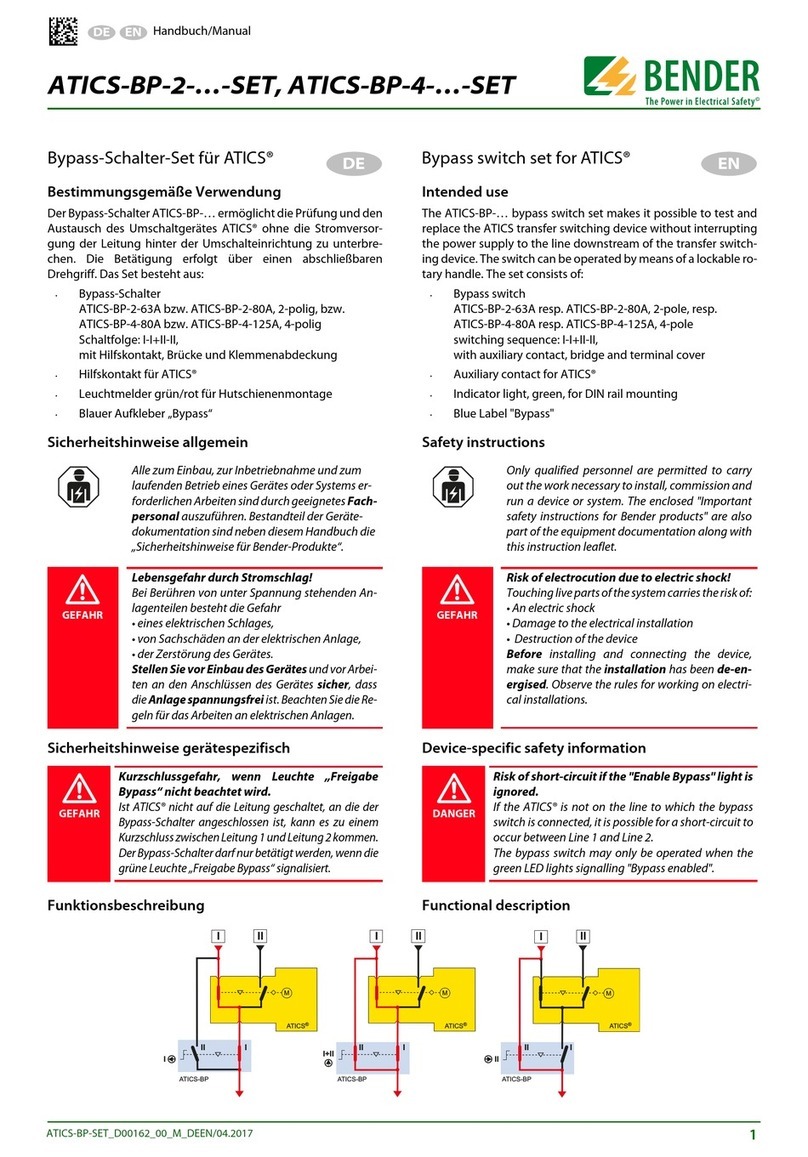Metrix SW6000 User manual

Doc# M9005 • REV N (May 2017) Page 1 of 12
SW6000 SEISMIC VIBRATION SWITCH
Installaon Manual
OVERVIEW
The SW6000 Seismic Vibraon Switch oers
basic protecon against gross changes in
structural seismic acceleraon.
This electronic switch is a versale exces-
sive vibraon protecon instrument. In its
standard conguraon, the SW6000 is an
economical single set point vibraon switch
with standard features and packaged in
industrial grade housing with available haz-
ardous area cercaons. Fully congured,
the SW6000 provides for local machine
control with oponal LCD readout and real
me remote operator interface via a 4-20
mA output.
SUPPLEMENTARY INFORMATION
Refer to Metrix Datasheet #1009462 and
Metrix Installaon Manual for Hazardous
Areas #100867 available at www.metrixvi-
braon.com.

Doc# M9005 • REV N (May 2017) Page 2 of 12
INSTALLATION
The sensive axis of the switch can be mounted on any radial axis, although the horizontal
axis is preferred so the unit sees maximum vibraon. The horizontal axis also reduces the
temperature exposure versus a vercal axis. If a bracket is required, it should be rigidly con-
structed to prevent spurious mechanical resonances in the SW6000 frequency range.
Stud Mount Unit
The Stud Mount Unit requires a tapped hole, see Metrix Datasheet (doc #1009462) Opon
“F” or use a Metrix model 7084 ange mount adapter. If an NPT mounng stud is selected,
the stud will ghten before the switch casing touches the machine case. The SW6000 should
be hand ghtened and then wrench ghtened to bring the conduit connecons to the ap-
propriate locaon. Studs with straight threads are provided with a locking nut.
The oponal display can be rotated in 90 degree increments to bring it to a readable posion.
Refer to the Wiring Secon for further informaon.
Figure 1: Housing
Aprox. Weight 27.2 g (0.61 lbs)
Dimensions in mm [in]

Doc# M9005 • REV N (May 2017) Page 3 of 12
Figure 2: Wiring Diagram (LCD opon not shown)
Figure 3: Typical Mounng Locaons
NOTES:
1. Diagrams show all available opons, see SW6000 datasheet (doc# 1009462)
to verify opons on your parcular unit.
2. On Single Limit Models, use Load Limit Two (2).
Baseefa Special Condions for Safe Use:
Ambient Operang Temperature: -40°C to +85°C (model without display),
-10°C to +70°C (model with display)

Doc# M9005 • REV N (May 2017) Page 4 of 12
WIRING
Terminal Wiring
If you have selected the oponal display, the display circuit board must be removed (two
screws) to expose the terminal strips. The display board cable should not be disconnected.
Simply place the display board out of the way to allow wiring to the terminal strips. The
display may be reinstalled in any of the four possible orientaons. Connecon to the unit is
through one or two conduit entries (See Metrix Drawing 9030). The cable gland or conduit
entries shall be in accordance with 13.1 of EN60079-1 and IEC60079-1. The user must provide
appropriate seal and sealing materials for the rates installaon. Unused conduit entries must
be plugged with a plug that conforms to Clause 13.2 of EN60079-1 and IEC60079-1. The inter-
nal ground connector allows for the connecon of a 14 AWG wire. This has a cross secon of 2
mm2. The external ground terminal can accommodate a 10 AWG wire that has an cross secon
area of 5 mm2. It is comprised of an M5 bolt with two at washers and one lock washer.
Refer to Figure 2 for wiring informaon. For incoming power and switch output(s) use ap-
proved wire of 14 AWG (1.5 mm2) or smaller.
For the current and dynamic signal outputs, a shielded twisted pair is recommended. By
convenon, the shield should be ed to common only at the receiver end. A cable consist-
ing of separate shielded twisted pairs can also be used. For the dynamic signal output, the
capacitance of the cable run must not exceed 0.03 mF (typically 1000 ).
NOTE: On ATEX/IECEx approved units, a locking set
screw must be loosened prior to lid removal.
CAUTION: Conduit seals are highly recommended to prevent the entry
of moisture into the switch. Moisture will damage the switch and void
the warranty. Internal and external protecve earth connecons must
be connected to the installaon protecve earth circuits.
Power Wiring
It is highly recommended that all power and triac/FET wiring be routed separately from the
external sensor, the dynamic signal and 4-20mA wiring in order to reduce AC/transient noise
pickup. The power required is indicated on the nameplate. The voltage supply must be
within the following limits:
24 VDC: 20 VDC to 28 VDC
115 VAC: 95 VDC to 125 VAC, 50/60 Hz
230VAC: 190 VDC to 250 VAC, 50/60 Hz
Polarity does not need to be observed when wiring for DC power. The preferred method of
operaon is to connuously apply power to the SW6000. If power is to be applied as a part
of the machine startup sequence it is advisable to apply power to the SW6000 30 seconds
prior to starng the machine in order to allow the electronics circuits to stabilize. This is
parcularly important if the adjustable startup delay opon is ulized and the delay is set to
less than 20 seconds.

Doc# M9005 • REV N (May 2017) Page 5 of 12
Alarm Limit Triac Output Wiring
The triac output(s) are electro-opcally isolated from each other, power, and the internal
circuit. These are medium-power devices with high immunity to electrical transients. If
desired, each triac can be supplied from an AC voltage source dierent from the main sup-
ply. The triacs can be connected in series with the triacs of other units. See Figure 4. Parallel
connecon of two switches doubles the triac holding (minimum load) current requirements.
The maximum triac supply voltage is 250 VAC. The worst case triac leakage (o) current is 2
mA. The maximum triac holding current is 35 mA at 25°C (60mA at -40°C) which requires that
the relay pull-in current have a greater value. Do not use a DC supply. The triacs can be set for
N.C. or N.O. operaon by posioning the Limit 1 / Limit 2 switches accordingly.
Typical Control Circuits SW6000 w/AC Power Wired to Interrupt Motor Starter
(series connecon)
a. Set each SW6000 for N.C. (normally closed) operaon. (See Figure 2)
b. M2, M3 and remote reset contacts must each be isolated.
Figure 4: Parallel connecon of two SW6000
a. Set each SW6000 for N.C. (normally closed) operaon. (See Figure 2)
b. M2, M3 and remote reset contacts must each be isolated.
Alarm Limit FET Output Wiring (oponal)
The oponal FET limit output(s) provide a low leakage switch for DC inputs to PLC’s or other
devices. Do not use on an AC supply. Observe proper polarity when wiring the FET(s) (See
gure 2). Damage to the FET(s) will result from improper wiring. As with the triacs, the FET(s)
can be set for N.C. or N.O. operaon by posioning the Limit 1/Limit 2 switches accordingly.
Limit Trip Delay
The base unit has an adjustable (1-15 sec.) limit trip delay. The vibraon level must be con-
nuously above the limit seng for the duraon of the me delay before the output devices
switch. The 4-20 mA output is not aected by this me delay. To reset the limit output
devices, the internal reset push-buon or the oponal external reset push-buon must be
pressed. Remote reset by a N.O. push-buon or momentary contacts may be made by wiring
to the remote reset terminals. Note that the vibraon level must be below the trip level for
the reset to funcon.

Doc# M9005 • REV N (May 2017) Page 6 of 12
Startup Trip Delay
Some machines generate vibraon levels during startup which are higher than normal
running levels. These high vibraon levels can exceed the Alarm Trip Limits which are set
above the normal running vibraon level. The standard SW6000 has a xed me delay which
inhibits alarm trips for 30 seconds from the closing of the startup contacts.
An oponal adjustable startup trip delay (1-30 sec.) permits the Alarm Trip Limits to become
operave in less than 30 seconds. Protecon of machines with short startup mes can be
improved by ulizing the adjustable Startup Trip delay.
The Startup Trip Delay is triggered by closing a set of contacts (momentary or connuous)
connected to the startup terminals. The contacts must be opened before the internal startup
delay mer can be iniated again. Connecng these terminals to a set of isolated auxiliary
N.O. contacts in a motor starter is a method commonly used to iniate the startup trip delay.
The 4-20 mA current output is inhibited (set to 4.0 mA) during the startup trip delay.
Remote Reset Wiring (oponal)
If remote reset capability is desired, connect Reset terminals (see Figure 2) to a remotely
located, momentary N.O. pushbuon switch. Observe hazardous area requirements if ap-
plicable.
4-20 mA Current Source Output (oponal)
If the oponal 4-20 mA output is installed, it may be connected to a remote receiver, as
shown on the wiring diagram (see Figure 2). This output is a current source (at 15VDC) and
requires no external loop power supply. Full scale current (20 mA) corresponds to the full
scale vibraon response marked on the face plate. A current of 4.0 mA represents a zero
vibraon condion. The maximum load resistance is 600 ohms. In high electrical noise loca-
ons a shielded, twisted pair cable is recommended.
FORMULA: X Full scale vibraon = Actual vibraon
EXAMPLE:
Measured mA Full Scale Vibraon Actual Vibraon
4.0 1.0 ips, peak 0.0 ips, peak
12.0 1.0 ips, peak 0.5 ips, peak
20.0 1.0 ips, peak 1.0 ips, peak
Dynamic Outputs
The sensor (acceleraon) signal is available at the terminal block and is capable of driving
a cable with a capacitance of up to 0.03 mF (typically 300m/1000 feet). Longer runs with
greater than 0.03 mF of capacitance can be used without the buer becoming unstable.
However, the frequency response will be reduced due to the increased capacitance.
RECEIVER CONFIGURATION / CALIBRATION
Signal Condioning Module Output: 4 - 20 mA Source Opon
The SW6000 can be factory congured to provide a 4 - 20 mA current source output propor-
onal to the specied full scale vibraon response (velocity or displacement). Figure 5 shows
suggested programming for a 4-20 mA receiver (PLC, DCS, monitor or computer).
Measured mA - 4mA
20mA - 4mA

Doc# M9005 • REV N (May 2017) Page 7 of 12
Vibraon Switch Calibraon
The SW6000 has been factory calibrated to standards traceable to the U.S. Naonal Instute
of Standards and Technology (NIST). If the accuracy is in queson, the SW6000 output
response can be compared (on an operang machine) with an independent vibraon
measurement made in the same axis and at the same locaon with a calibrated vibraon
analyzer. Ensure that the analyzer is congured with the same frequency response as the
SW6000 and with the same unit of measure (i.e. ips pk.). To prevent tampering, there are no
user accessible adjustments available for eld recalibrang. If recalibraon is required, the
SW6000 should be returned to the factory for recalibraon to a traceable standard. In eld
installaons, the calibraon should be veried at least once per year. In test cell applicaons,
depending upon the severity of handling, correct operaon and calibraon should be veri-
ed each 90-180 days.
Figure 5: Suggested programming for a 4-20 mA receiver
Figure 6

Doc# M9005 • REV N (May 2017) Page 8 of 12
Determining Output Voltage
If it is desired to determine either the acceleraon or velocity amplitude when one measure-
ment is unknown, the following formulas can be employed.
If g’s (A) are known and you wish to determine the velocity output:
If velocity is known and you wish to determine the displacement output:
If g’s (A) are known and you wish to determine the displacement output:
V = ips, peak
F = RPM
A = g peak
D = mils, peak-to-peak
USER ADJUSTMENTS
Limit Trip Delay
The Limit Trip Delay adjustment allows the user to set the me delay from 1 to 15 seconds.
This is useful in avoiding false trips from transient condions while the machine is running.
Adjustable Startup Trip Delay (oponal)
The oponal Startup Trip Delay adjustment allows the user to set the me delay from 1 to
30 seconds. This is useful in tailoring the Startup Trip Delay for a parcular machine’s startup
vibraon characteriscs.
Limit Sengs
The Limit Seng adjustment allows the user to set the vibraon levels at which a limit will
trip. The adjustment has a range of -10% to 110% of the full scale vibraon level. A midscale
adjustment corresponds to a 50% vibraon level limit. The limit seng can be set precisely
by measuring the limit voltage with a DVM. The test points for measuring this voltage are
labeled TP3 (Limit 2), TP4 (limit 1) and COM (common) on Figure 2. The DC voltage repre-
sents a percentage of full scale. For example, .46 VDC would represent a limit seng of 46%
of full scale. Turning the adjustment to its minimum value (CCW) allows the user to test the
trip circuitry, including LED’s, me delays and triac (FET) switches.
AUTO RESET
The switch outputs (triacs or FETs) are congured at the factory for latching operaon. The
switch outputs can be congured for non-latching operaon so they automacally reset when
the vibraon level falls below the alarm limit threshold. To do this, remove power to the
unit. Remove the transmier cover and the display board if present. Refer to Figure 7. (Move
both jumpers to the auto posion). Reassemble the display board and transmier cover. The
switch outputs will now reset when the vibraon level falls below the alarm limits.
V= 3687 x A
F
D= 19,100 x V
F
D= 8383 2x V
F
( )
Example V= 3687 x 0.5g = 1.02 ips, peak
1800 RPM

Doc# M9005 • REV N (May 2017) Page 9 of 12
Figure 7: Auto reset
CAUTION: This test should be performed with the machin-
ery not running or switch outputs by-passed. Aer tesng,
reset the limits to the proper operaonal values.
CAUTION: Disconnect or disarm the machine alarms and/or
shutdown circuits prior to tesng the vibraon switch outputs.
TROUBLESHOOTING
1. The unit appears to be funconing, but limit operaon is in queson.
a) Operaon of the limit triac/FET and the aached relay can be veried by toggling the NO/
NC switch.
b) The limit seng can be rotated to the minimum (-10%) seng in order to exercise all of
the limit control logic and trip delay circuits. The limit triac/FET should operate and the limit
LED should turn on aer the set trip delay expires. REMEMBER to return the limit seng to
the original posion aer this test.
c) If the LED is lit but the limit is not funconing, check to make sure the triac/FET load is
wired properly and power is present at the limit terminal block and relay. CAUTION: voltages
at the limit switch terminal block can be dangerous. Exercise cauon when checking for volt-
age at the terminal block. For AC loads, ensure the minimum current through the load is 35
mA for temperatures above 25°C or 60 mA below 25°C. For DC loads, ensure proper wiring
polarity has been observed.
2. The unit appears to be funconing, but the 4-20 mA operaon is in queson.
a) Ensure that the current loop is wired properly and that the total loop resistance does not
exceed 600 ohms. The Model SW6000 4-20 mA circuit is a current source. A voltage source
(power supply) must not be used in the circuit.

Doc# M9005 • REV N (May 2017) Page 10 of 12
b) Verify current output with separate current meter connected in series with the 4-20 mA
output and the receiving instrument input. Verify the current is correct. Current output with
zero vibraon should be 4.0 mA. A 20 mA current represents full scale vibraon.
3. The unit does not respond to a vibraon input during the rst few seconds of operaon.
a) The startup me delay circuit prevents the transmier from reacng to a vibraon input
during the startup delay me period. The standard me delay is xed at 30 seconds. If the
unit has the oponal variable startup delay, it can be varied from 1 to 30 seconds. The cur-
rent output is held at 4.0 mA and the display is held at 000 unl the startup me delay has
expired.
4. The unit trips the limits shortly aer applying power to the unit.
a) Units with an adjustable startup me delay which is set close to the minimum seng can
have the limits trip at power up. This is due to the seling me of the circuitry in the Model
SW6000 switch. If a short startup delay is desired, it is suggested that power rst be applied
to the unit for a minimum of 20 seconds. Power may also be applied connuously. The limits
may need to be reset depending on the parcular applicaon. Aerwards, the machine can
be started in a normal fashion.
5. The unit is funconing but accuracy is in queson.
a) The vibraon output can be veried by placing a separate vibraon pickup near the base
of the Model SW6000 and comparing the two readings. Remember that the vibraon meter
or analyzer must ulize true RMS detecon and have similar frequency response character-
iscs. Even then, signicant dierences can exist due to dissimilar sensor orientaons, hand-
held versus rigid mounng, meter or analyzer me constant dierences, and other factors.
The calibraon of the Model SW6000 should be veried on a yearly basis as a minimum.
b) Alternately, the unit can be removed and placed on a calibrated shaker system in order to
verify the calibraon. Metrix Instrument Co. can provide factory calibraon traceable to NIST
standards.
6. The unit does not appear to be funconing.
a) Ensure that all wiring connecons to the terminal block are correct, terminal screws are
ght and that the correct voltage is present at the terminal block power (Vin) terminals. DC
voltage polarity is arbitrary. Refer to Figure 4 and Product Idencaon page 2 for specic
details. If power is applied, the LCD display (if present) should be funconing, and the cur-
rent output should be between 4.0 and 20.0 mA.

Doc# M9005 • REV N (May 2017) Page 11 of 12
HAZARDOUS AREA APPROVALS
IECEx Approval
(World)
IEC Markings:
E x d I I B + H 2 T 4 G b
Ta -20°C to +85°C
(no display)
Ta -10°C to +70°C (display)
IECEx LCI 11.0016X
IEC Standards:
IEC60079-0:2011
IEC60079-1:2007
WARNING-EXPLO-
SION HAZARD-DO
NOT DISCONNECT
WHILE CIRCUIT
IS LIVE UNLESS
AREA IS KNOWN
TO BE NON-HAZ-
ARDOUS.
AVERTISSE-
MENT-RISQUE
D’EXPLOSION. NE
PAS DEBRANCHER
TANT QUE LE
CIRCUIT EST
SOUS TENSION,
A MOINS QU’IL
NE S’AGISSE D’UN
EMPLACEMENT
NON DAN-
GEREUX.
ATEX Approval
(Europe)
ATEX Markings:
II 2G Ex d IIB + H2 T4 Gb
Ta -20°C to +85°C
(no display)
Ta -10°C to +70°C (display)
LCIE 02 ATEX 6157X
EN Standards:
EN60079-0:2012
EN60079-1:2007
UL Approval
(North
America)
CSA Markings:
Class I, Div 1, Groups B,C,D,
T4A, NEMA 4/4X
Class I, Div 2, Groups B,C,D,
T4A, NEMA 4/4X
UL/CSA Standards:
UL 50
UL 508
UL 1203
UL 61010
CSA C22.2 No.25
CSA C22.2 No. 30
CSA C22.2 No. 94
CSA C22.2 No. 142
CSA C22.2 No. 213
CSA C22.2 No. 61010
ANSI/ISA 12.12.01-
2007
1180

Doc# M9005 • REV N (May 2017) Page 12 of 12
info@metrixvibraon.com
www.metrixvibraon.com
8824 Fallbrook Dr. Houston, TX 77064, USA
Tel: 1.281.940.1802 • Fax: 1.713.559.9421
Aer Hours (CST) Technical Assistance: 1.713.452.9703
This electronic equipment was manufactured according to high quality stan-
dards to ensure safe and reliable operaon when used as intended. Due to
its nature, this equipment may contain small quanes of substances known
to be hazardous to the environment or to human health if released into the
environment. For this reason, Waste Electrical and Electronic Equipment
(WEEE) should never be disposed of in the public waste stream. The “Crossed-Out Waste
Bin” label axed to this product is a reminder to dispose of this product in accordance
with local WEEE regulaons.
Table of contents
Other Metrix Switch manuals
Popular Switch manuals by other brands
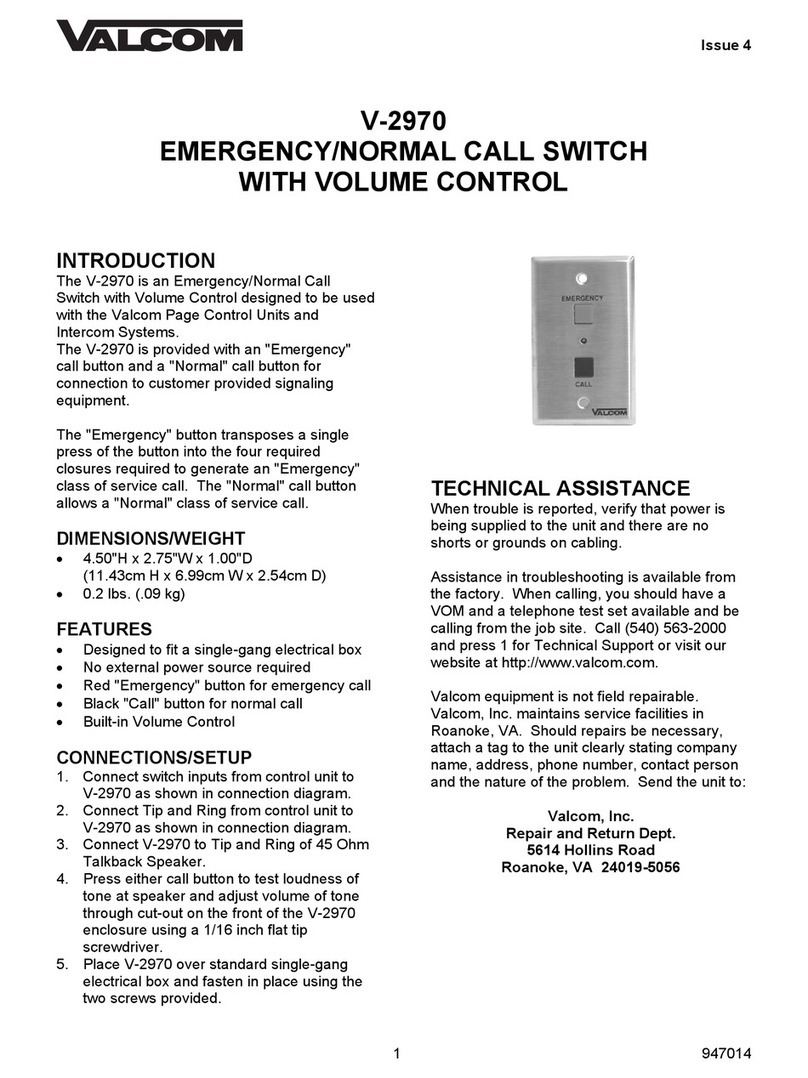
Valcom
Valcom V-2970 instruction manual

MyNetFone
MyNetFone MNF VPBX quick start guide
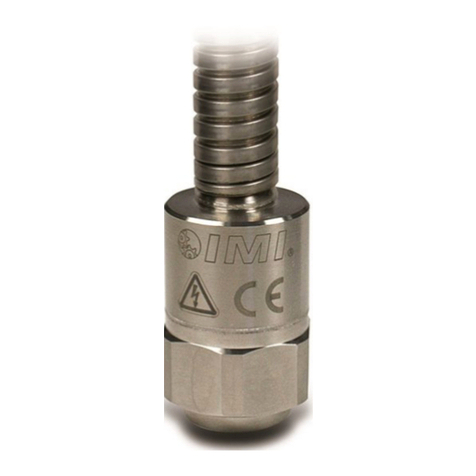
PCB Piezotronics
PCB Piezotronics IMI Sensors 686B61 Installation and operating manual
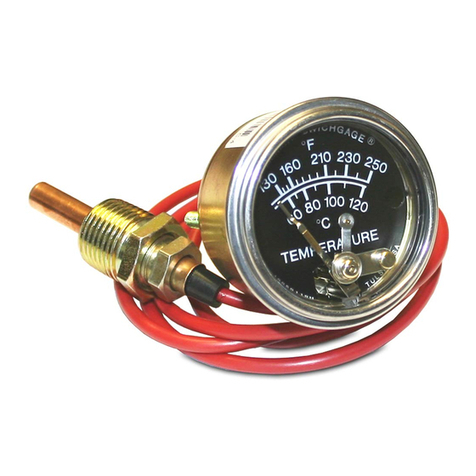
Murphy
Murphy Temperature SWICHGAGE A20 Series owner's manual
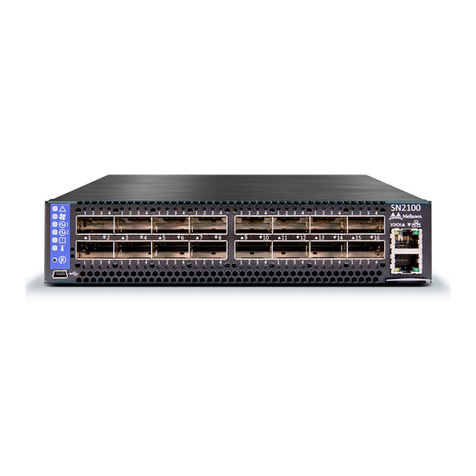
Mellanox Technologies
Mellanox Technologies Spectrum SN2100 Quick installation guide

Ultra
Ultra GammaView 2555 user manual
